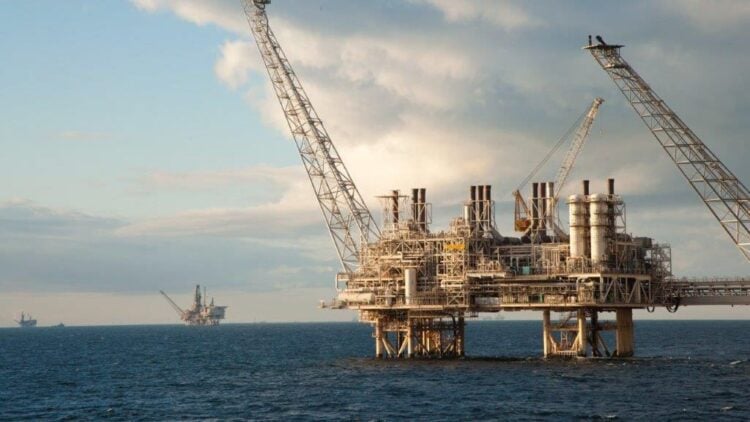Publisher: Maaal International Media Company
License: 465734
Azerbaijan’s oil puts it among top 20 crude exporters
اقرأ المزيد
Azerbaijan, which will hold early parliamentary elections on Sunday, is a Caucasus country with a historical connection to hydrocarbons, which account for most of its revenue.
In the late 13th century, Venetian merchant, explorer and writer Marco Polo reported seeing an “oil fountain” gushing while traveling along the Silk Road in the Caucasus, (CNN).
The name Azerbaijan comes from the Persian word “azr,” or “holy fire,” from ancient Zoroastrian temples that were powered by gas or crude oil that naturally flowed from the ground.
Today, near the capital Baku, the Zoroastrian temple of Ateshgah has a fire burning, fueled by a methane gas pipe from a nearby field. In the past, the gas seeped from cracks in the ground, according to Agence France-Presse.
The country is historically considered one of the cradles of modern oil extraction; Even before drilling began in the United States, a well was drilled in 1846 near Baku, which was soon surrounded by towers.
The Swedes Robert and Ludvig Nobel, Albert’s brothers, after whom the famous Nobel Prizes are named, were early investors in Azerbaijani oil.
They bought a refinery and oil fields in 1876, then founded Branobel, which became the world’s largest oil company before being nationalized in 1920 when Azerbaijan came under Soviet control.
In 1900, it was estimated that more than half of the world’s oil production came from the Absheron Peninsula on the Caspian Sea in the Baku region.
The Republic of Azerbaijan, which became independent in 1991 after the collapse of the Soviet Union, gets most of its wealth from oil and natural gas, today mainly from offshore deposits in the Caspian Sea.
Hydrocarbons account for 90 percent of the country’s exports, half of its state income and a third of its gross domestic product, according to the International Energy Agency and the US State Department.
The International Energy Agency classifies Azerbaijan as a “major” producer and exporter of natural gas and oil, with the country producing 32.7 million tons of crude and 35 billion cubic meters of natural gas in 2022, more than two-thirds of which was exported.
The country is among the top 20 crude oil exporters and the 12th largest gas exporter, according to 2022 data.
The Azerbaijan-Chirag-Guneshli deep-sea oilfield complex, discovered in the 1970s about 100 kilometers (62 miles) east of Baku, is the country’s main source of oil.
The site, operated by BP in partnership with state-owned SOCAR, accounts for more than half of the country’s crude oil production, according to BP’s operating figures for the first quarter of 2024.
While Azerbaijan’s oil production has been in decline since peaking in 2010, natural gas production is booming.
Azerbaijan, a member of OPEC+ (an expanded version of the Organization of the Petroleum Exporting Countries), champions gas as a transition energy as countries seek to cut carbon emissions, and plans to boost its output by 35 percent by 2034.
Baku hopes to capitalize on a decline in Russian gas exports, hit by international sanctions following the war in Ukraine, to become a preferred supplier to Europe through the Southern Gas Corridor pipeline network that crosses Georgia and Turkey, linking Azerbaijan to Italy.
The main gas field, Shah Deniz, was discovered in 1999 in the Caspian Sea about 70 kilometers (43 miles) south of Baku and is one of the world’s largest natural gas fields. Operated by BP, it provides more than two-thirds of the country’s production, according to BP’s operating figures for the first quarter of 2024.








